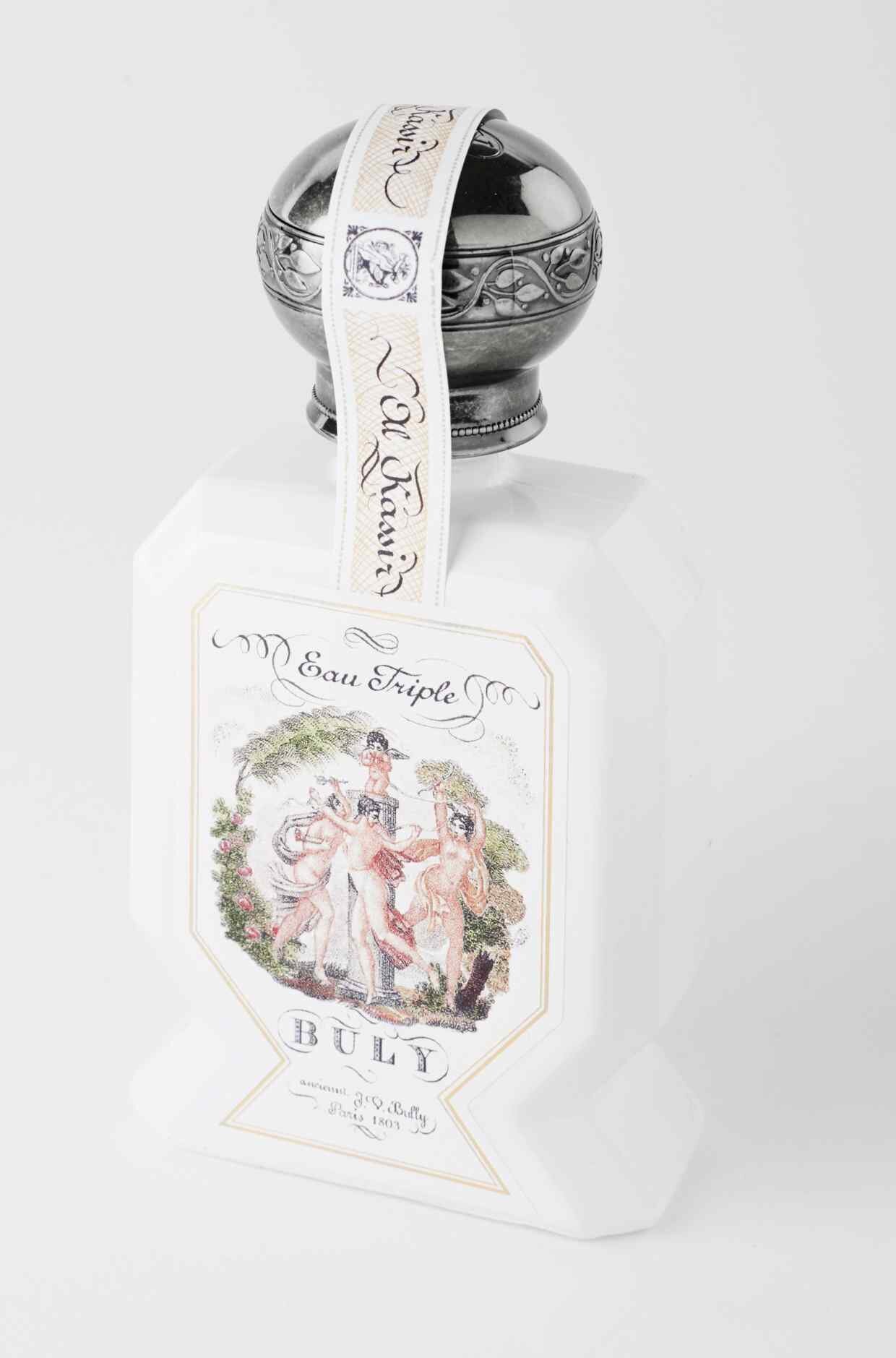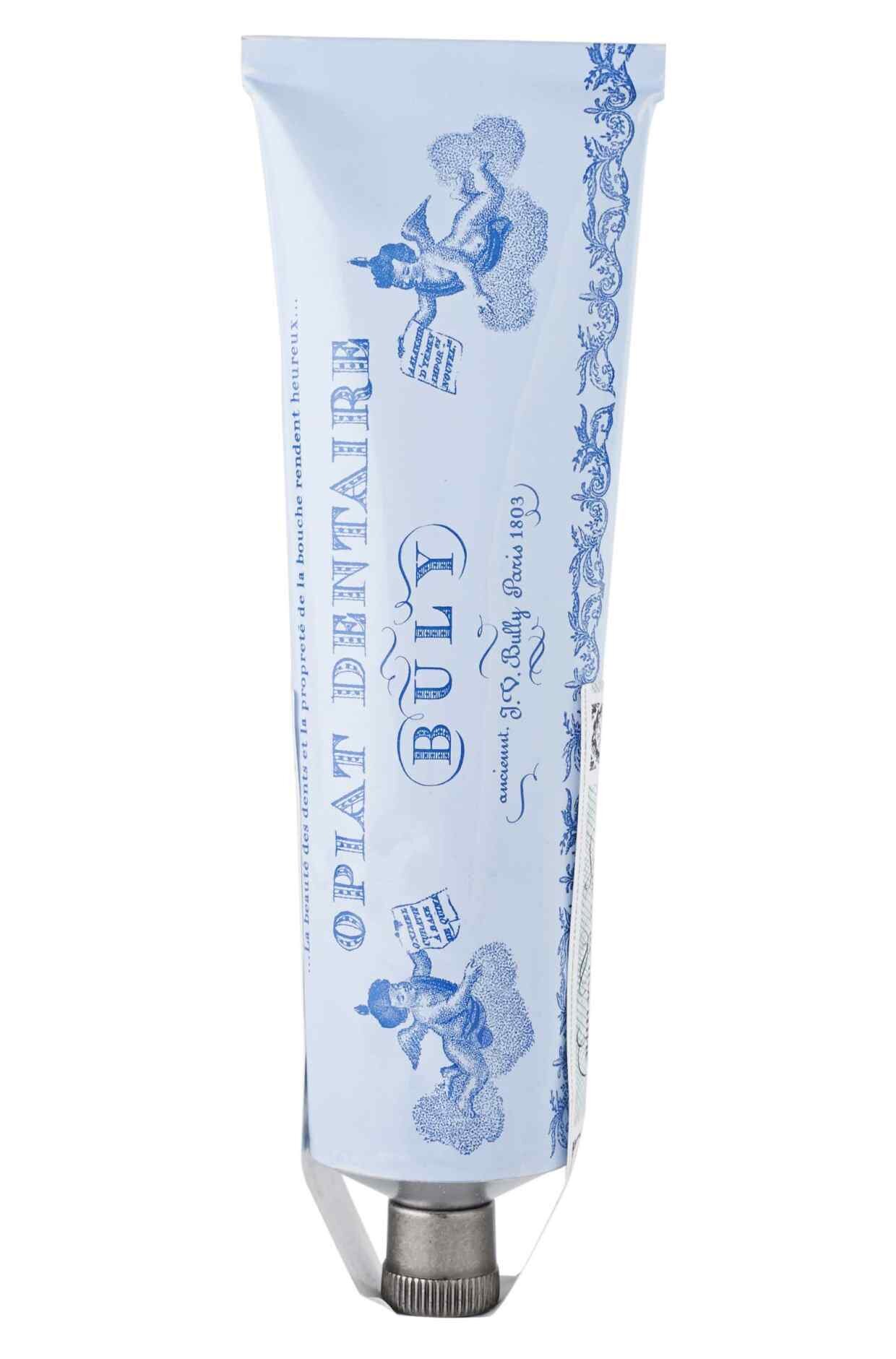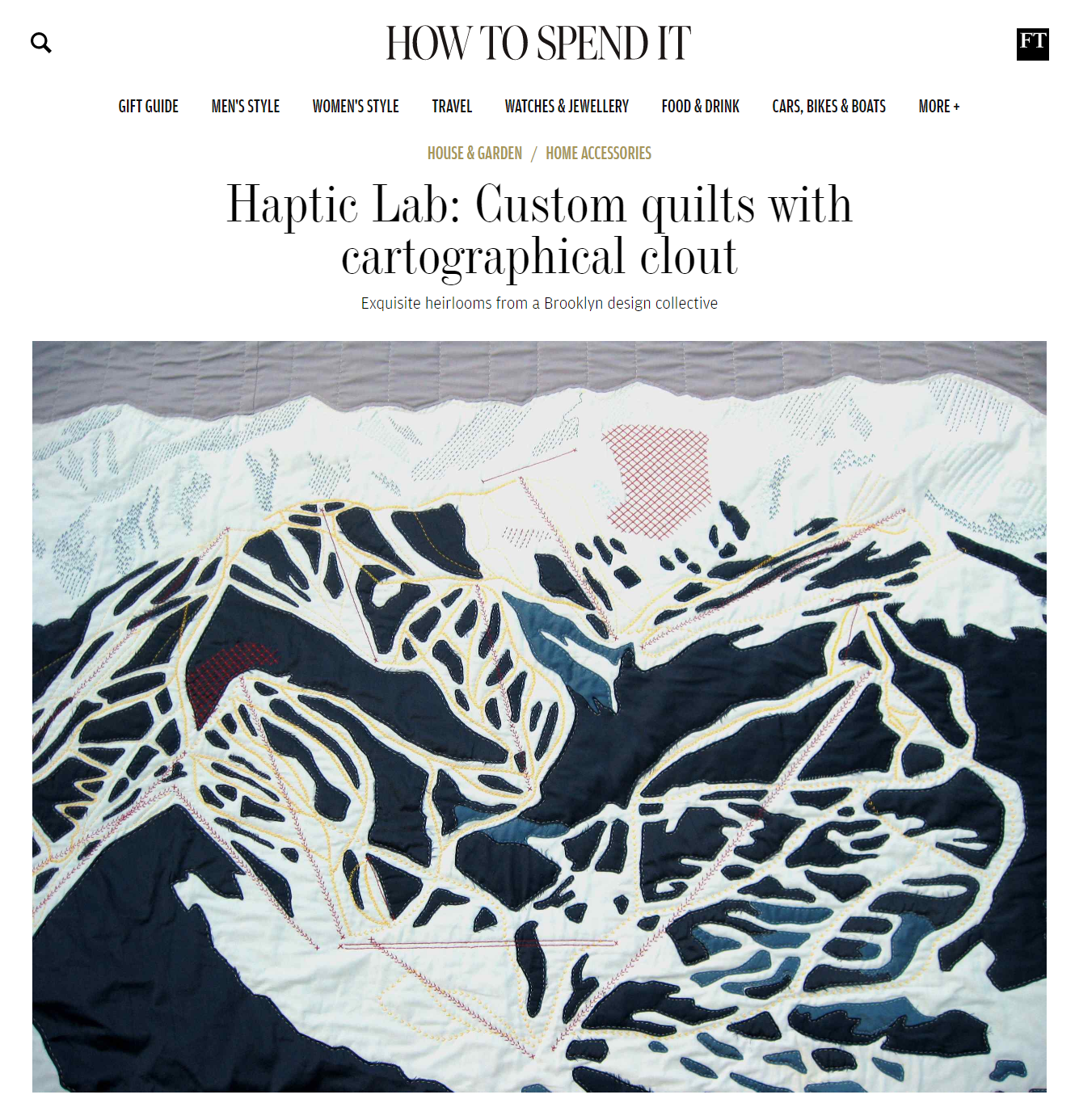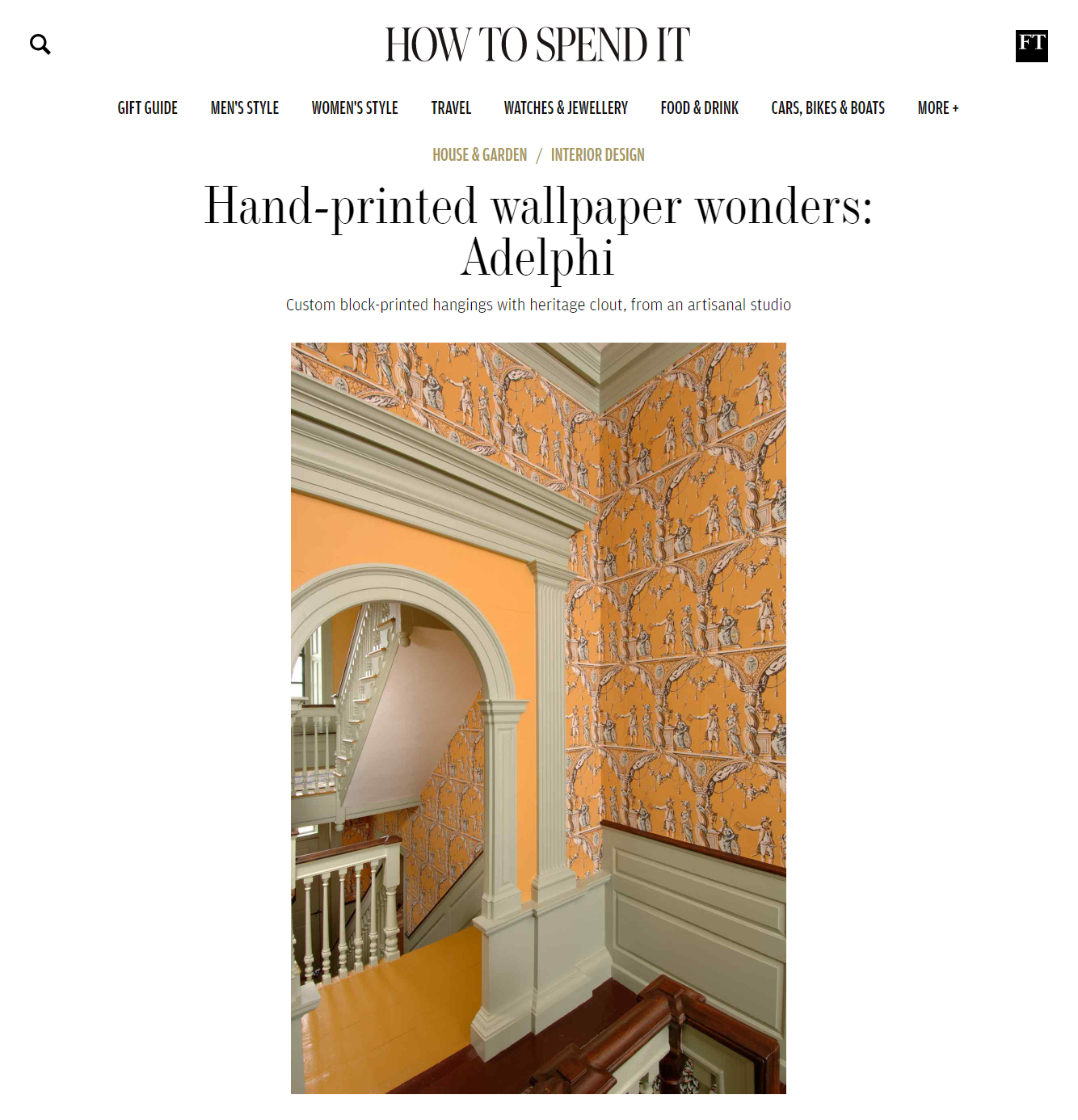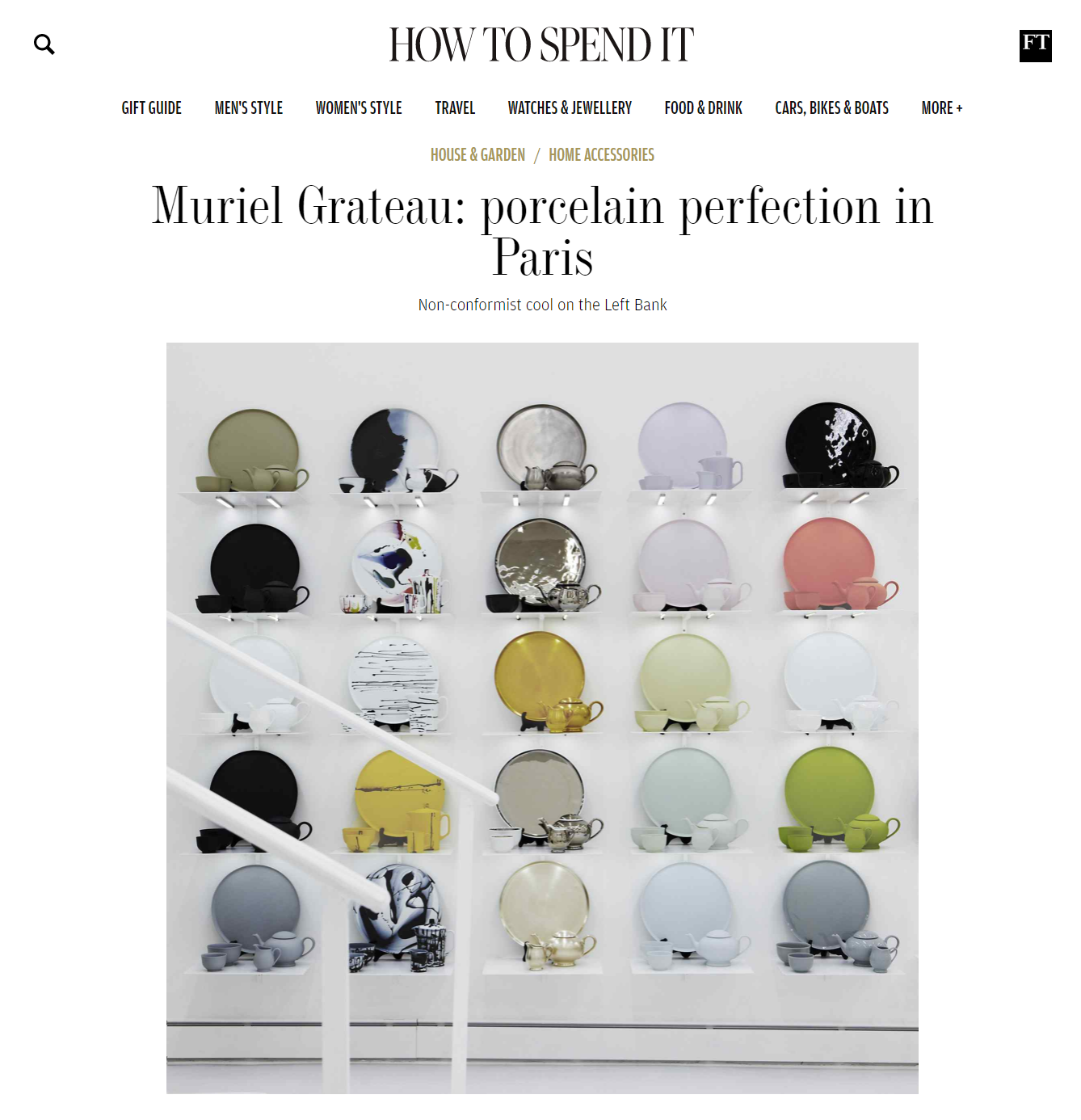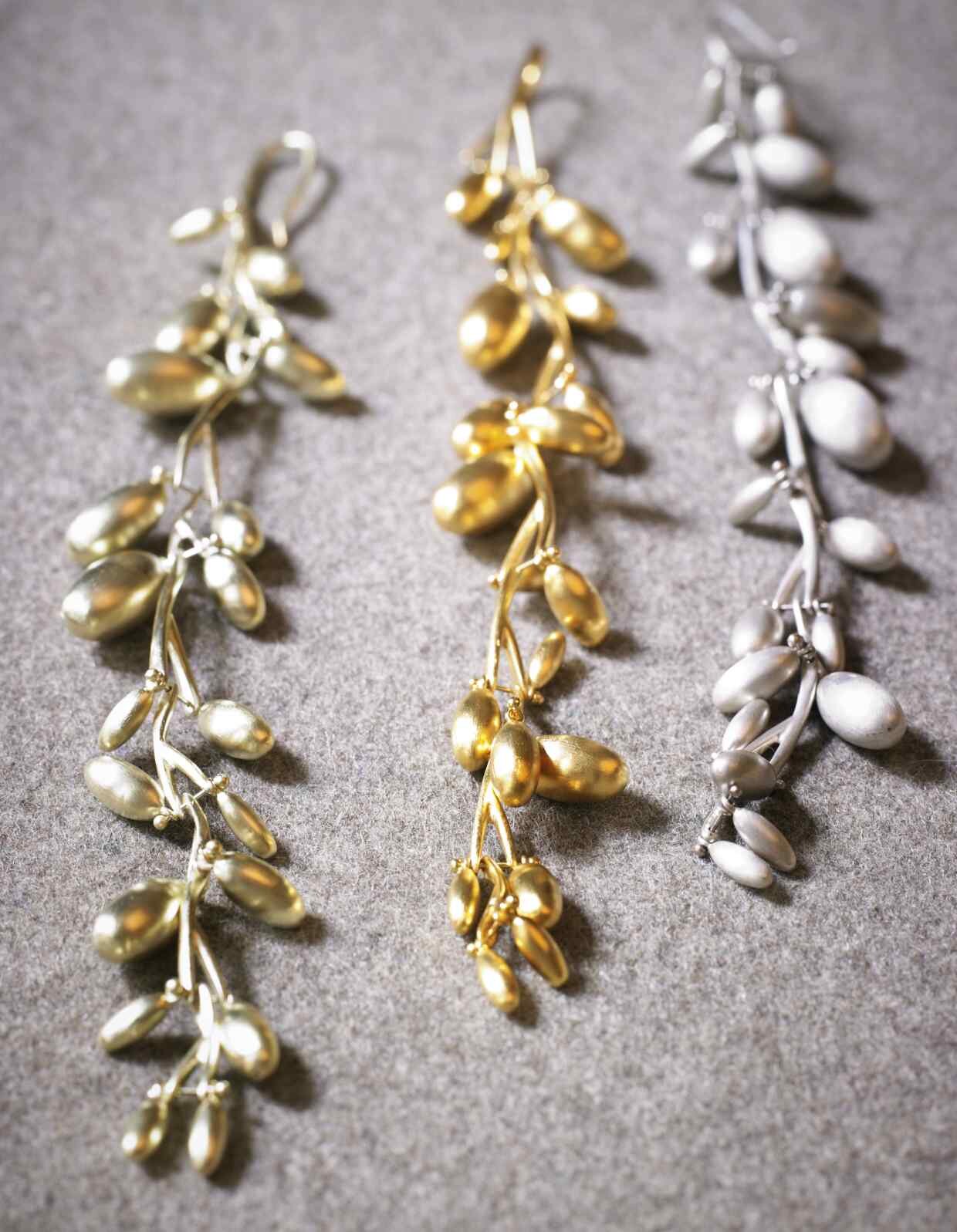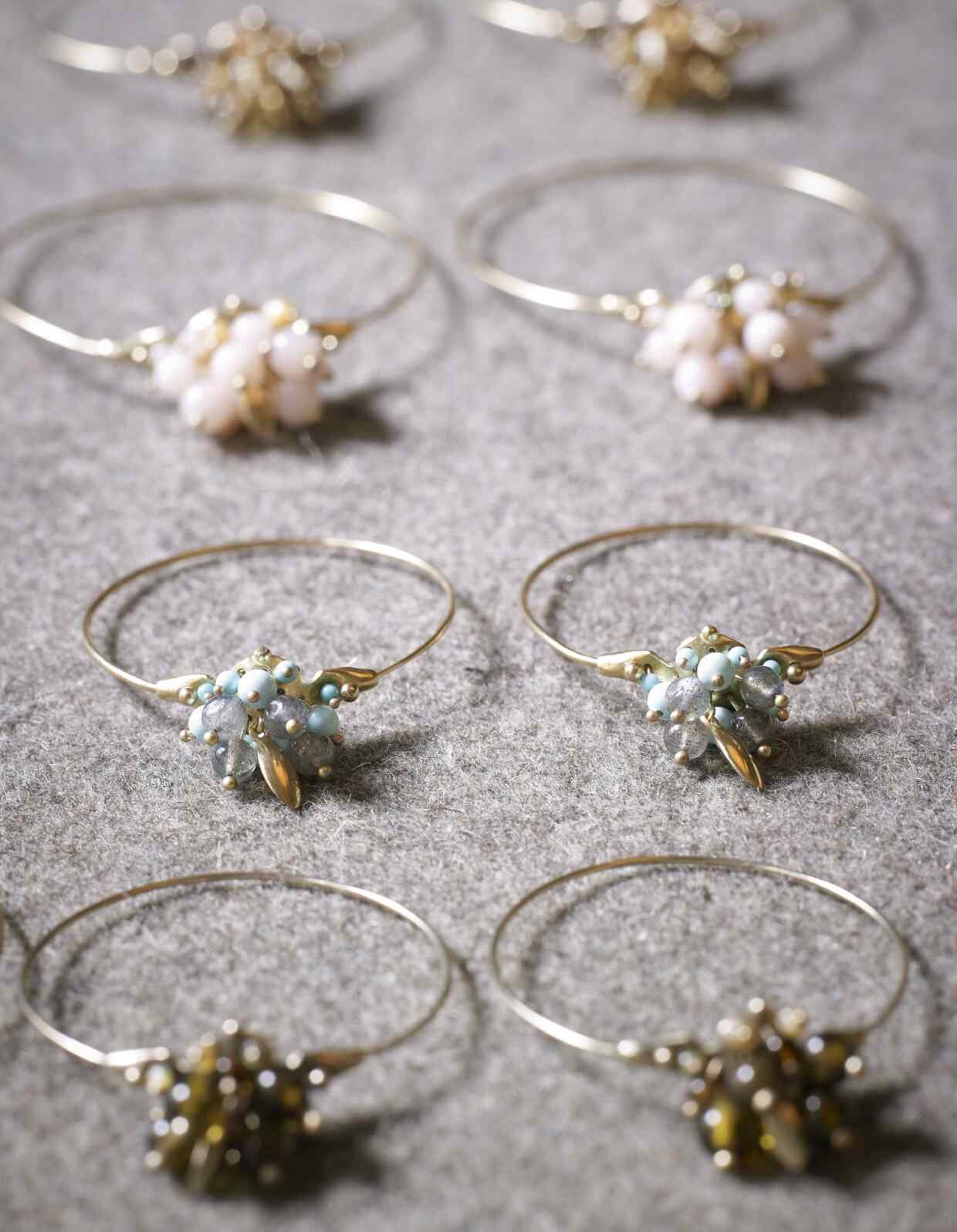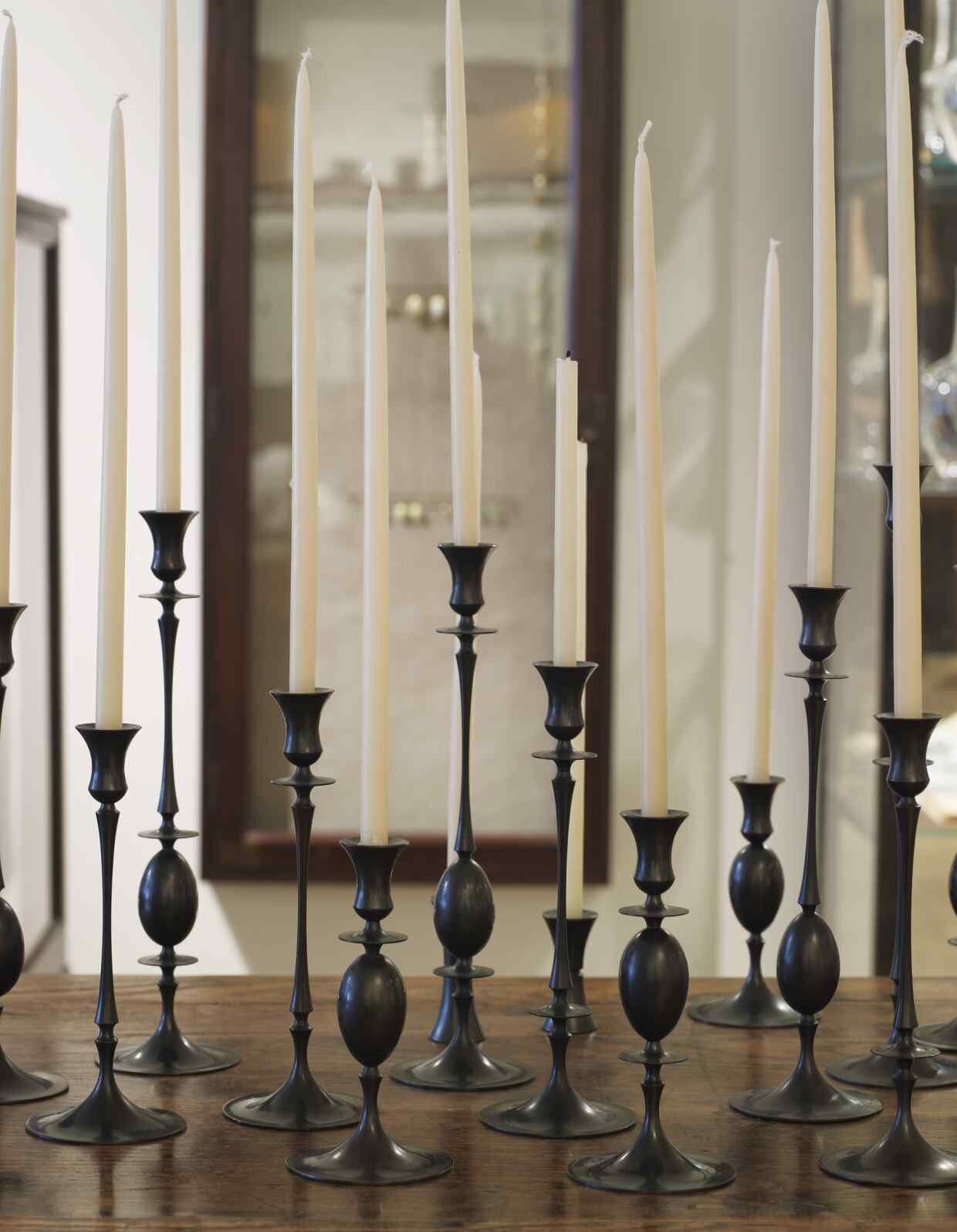4 Bay Area Paper Makers Championing the Art of Correspondence
The texture of handmade paper, the loops and bowls of a friend’s distinctive handwriting, the appreciation of the time and care taken in sending: These are just a few of the great pleasures of receiving a physical note. However, as the letter—and even the blithe summer postcard—has long been superseded by the Facebook post, it has become even more meaningful to receive a thoughtful, handwritten missive or invitation. Fortunately, a coterie of Bay Area artisans is carrying on the civilized tradition of the fine stationer. Embellishing sumptuous stock with letterpress, engraved imagery and hand gilding, San Francisco papermakers bring together age-old processes with innovative techniques. Following are four Bay Area ateliers championing the art of correspondence.
Julie Holcomb
A Bay Area icon—she has been a fine printer for more than 30 years—Julie Holcomb is a specialist in custom letterpressing and hand-drawn calligraphy. Emeryville-based, Holcomb brings a minimalist aesthetic to the bespoke invitations, stationery and calling cards she creates for clients like Chez Panisse and Pentagram. Using mould-made, 100-percent cotton paper that is crafted for her in a single, thick layer—versus the multiple, laminated sheets used in inexpensive stationery—Holcomb creates warm, elegant printed matter that is weighty and subtly textured. Hand-applied edging in rich metallic and enamel foils is a studio signature. By appointment only, 3601 63rd St., Emeryville, 510-654-6416,
Dependable Letterpress
A disciple of Julie Holcomb, founder Joel Benson operates a Heidelberg Press out of his five-person Portrero Hill studio. Benson produces exquisitely simple blind deboss business cards, die-cut save-the-dates and holiday greetings—many with hand-painted edges and perforations—all with a tasteful, graphic sensibility. Uncoated tree fiber papers also lend Dependable Letterpress’ personal stationery a tactile quality. 610 22nd St., Suite 247, 415-503-0981.
Rhiannon Alpers
Artisan/owner Rhiannon Alpers is a true papermaker, letterpress printmaker and bookbinder with a strong focus on crafting paper stock using cotton, linen and plant fibers. Her custom papers feature poetic elements ranging from tulip stems—which lend a textural feel—to vibrant bird of paradise petals that yield rich, maroon hues. Alpers shares her craft via studio workshops including “Papermaking: Exotic Fibers” (July 11) and “Sculptural Papermaking” (July 30 and August 29). 1890 Bryant St., Suite 308.
Twig & Fig
Berkeley’s Gourmet Ghetto is home to this retail paperie and print studio that specializes in fine wrapping papers and intricate, laser-cut invitations inlaid with wood, plastic and metal filigree. In addition to custom, couture creations, Twig & Fig stocks papers sourced from around the globe (Gmund from Germany, Arches watercolor paper from France, and air-dried Lama Li varieties from Nepal, to name a few), as well as wax seals and elegant Manuscript fountain pens. The design loft offers a serene space to peruse papers and sip fine teas. 2110 Vine St., Berkeley, 510-848-5599.
A version of this article appeared in the June/July 2015 issue of San Francisco Cottages & Gardens with the headline: The Art of Correspondence.
A Spare, Industrially Inspired Home by Aidlin Darling Design Melds Seamlessly into the Mill Valley Landscape
Photography by Matthew Millman
Achieving a meaningful connection with the site of a future home is more than lip service for San Francisco architecture firm Aidlin Darling Design. A recent project saw co-founder Joshua Aidlin and associate principal Kent Chiang camping out on the property in order to truly understand it: to feel how the wind shifted throughout the day; to hear what the acoustics were like at sunset; and to see how the moon rose at night. It was only then that they proceeded to work with their clients to develop an idea that has, says Aidlin, “resulted in a timeless building that represents their values on this very specific piece of land.”
The 4,000-square-foot home in Mill Valley is sited to leverage sweeping views of the layered valley vistas and iconic Horse Hill in the distance. “The great benefits of this particular property are its two optimistic anchors,” says Aidlin of the landscapes to the north and south. “The clients wanted a very private home that engaged the garden in every way,” he adds. The program also needed to accommodate the owners’ passions for art collecting and cycling. “A courtyard house was the perfect solution for this family,” says Chiang.
To achieve the desired connection with the garden, the architects designed the main living space—housing the vaulted living room, dining room and kitchen—to be transparent to the outside. A sliding glass wall opens to a gracious deck, patio, gardens and the solar-powered reflecting pool in the distance. Passively cooled rooms, including a writer’s studio, gym and art court, all radiate from this central area. The garage also does double duty as the bike shop, featuring an impressive hanging rack that holds 8–10 bicycles, and plenty of space for fine-tuning and repairs.
But eyes aren’t always turned to the outside. To showcase the clients’ art collection, Aidlin and Chiang chose simple, raw materials to create an industrial, loft-like look. Matte black corrugated siding, waxed steel surfaces, poured concrete floors and white plaster walls—on which to exhibit the work of emerging, experimental artists—all figure prominently.
The interior design, by Sausalito-based Susan Collins Weir, is intentionally spare, focusing on curated vignettes of furniture, objects and textiles. Floor-to-ceiling drapes in Great Plains fabric ripple and fold in response to corrugated steel surfaces, all “in neutral hues that are sympathetic to the architectural materials, textures and scale being used,” notes the designer. In the dining area, the reclaimed eucalyptus worktable of British sculptor David Nash—complete with the artist’s chain-saw markings—now serves as an immense dining table. Classic elbow dining chairs by Carl Hansen, a pair of exquisite leather Poul Kjaerholm lounge chairs, and a vintage Carl Auböck side table are just a few of the pieces that have also been carefully selected by Collins Weir. And, as a nod to the couple’s love of cycling, she sourced a chair by Max Lipsey that is “comprised of industrial bike parts, but refined at the same time.” The overall effect is “a house that lives effortlessly,” explains Collins Weir, and that is at once both comfortable and cutting edge.
Seamlessly fusing architecture with art and the surrounding landscape, the home ultimately focuses on design for all the senses. “We are on the human side of modernity,” notes Aidlin. All the more reason to sleep out underneath the starry California sky.
A version of this article appeared in the April/May 2015 issue of San Francisco & Gardens with the headline: The Open House.
Paris’s chic apothecary Buly 1803
A magical emporium inspired by 19th-century French hospital pharmacies
A magical emporium inspired by 19th-century French hospital pharmacies
One of the most wonderful new additions to Paris’s Saint-Germain-des-Prés is Buly 1803, a boutique specialising in scented oils, lotions, soaps, candles and creams. Although open for less than a year, this chic apothecary on Rue Bonaparte was inspired by traditional 19th-century French hospital pharmacies.
Image: Alexandre Guirkinger
Buly 1803 is a true labour of love for husband and wife owners Ramdane Touhami and Victoire de Taillac, and no detail has been overlooked, from exquisite oak shelves, marble counter surfaces and Sicilian floor tiles to the stylish, calligraphic labels and elegant back-lighting that renders glass vessels glowing. The duo had an impressive journey to launching the boutique: Touhami was the co-owner and artistic director of luxe candlemakers Cire Trudon, while de Taillac was communications director for Colette. Together, they have revived a venerable French brand – originally opened in 1803 under the name Bully (one “l” has been dropped to contemporise the name) – and have reimagined its formulations for a new age.
Image: Alexandre Guirkinger
Image: Alexandre Guirkinger
Inspired by the firm’s original vinegar perfume-making catalogues, the new concoctions now include natural ingredients – all free from parabens, phenoxyethanol and silicones. This jewel box of a shop invites experimentation and the eight water-based perfumes (€110 each, example in second picture) seemed an excellent place for me to start. Tuberose, bergamot, Scottish lichen and macassar scents were my favourites, each subtle and light. I also liked the Pommade Virginale (€35) face moisturiser, whose sweet almond-oil and linden-water mix I bought in a handy travel tube (it has proven particularly useful for long-haul flights). A similar version for the body – Pommade Concrete (€28, third picture) – enticed me with its tarot-card-inspired label, and is now my cold-weather staple for dry, chapped hands.
Image: Alexandre Guirkinger
I also stocked up on Buly’s vast selection of vegetable oils: from apricot kernel oil (from €4 for 10ml) to one pressed from baobab seeds (from €6 for 10ml). My favourite finds, however, were the scented “glass bell” candles (€120 each) made of rice, soy and copra, with names like “Genereaux D’Empire”(fourth picture) and “Retour D’Egypte”. The ultimate souvenir, however, might just have been the Opiate Dentaire (€18, sixth picture) – a brightening toothpaste with hints of rose.
It was near closing time when I discovered drawers full of natural-honeycomb sponges, horsehair gloves, boar-bristle brushes and Japanese-boxwood combs. They are top of my shopping list for next time...
Atelier Courbet: downtown design chic in NYC
An inspiringly offbeat mélange of old craftsmanship and fresh imagination
An inspiringly offbeat mélange of old craftsmanship and fresh imagination
Set in a 19th-century carriage house, Atelier Courbet, a new shop-cum-gallery in SoHo, is a paean to offbeat contemporary design made by new artisans using old-world techniques. The slightly obscure mélange – a yellow limited-edition, hand-stitched buffalo-leather bicycle ($16,500, seen in second picture), designed by the singer Pharrell Williams and crafted by Domeau and Pérès, beside art-installation-esque porcelain chalices by Andrea Branzi for Sèvres ($3,500), and a subtle yet striking grey crystal Apollo table lamp (from $1,195) by Cristallerie Royale de Saint-Louis – appears to be anything but off-putting, as was evident on my recent visit as people milled about excitedly.
Founder and creative director Melanie Courbet honed her aesthetic while collaborating with luxury brands such as LVMH, and is now tuning her attention to showcasing the fine craftsmanship of storied producers with heritage clout but modern sensibility – such as Sèvres, Puiforcat, Cristallerie Royale de Saint-Louis and centuries-old Japanese textile maker Hosoo.
One of Atelier Courbet’s most unique offerings is the upholstered leather work by Domeau & Pérès, a Parisian firm helmed by two Hermès veterans – one a master saddle maker, the other an upholsterer – who launched their own venture. Their sculptural Bouroullec desk ($13,500), designed by Erwan and Ronan Bouroullec as a tribute to Jean Prouvé’s Compas desk, pays homage to the midcentury designer’s work through solid oak and butter-soft lambskin. The playful Bumper bed (from $28,000) is a collaboration between Domeau & Pérès and designer Marc Newson, and offers a grown-up take on the traditional futon, complete with pebbled leather, and is available to order in white, sand or chocolate with a bold orange stripe.
A selection of chic games includes a chrome and camel-leather-clad Bonzini foosball table ($8,200), again made by Domeau & Pérès, and a limited-edition backgammon set by Puiforcat ($28,000), carved from Macassar ebony and sycamore, and with sterling-silver pieces. A rosewood and stainless-steel knife set ($4,600), designed by Gabriele Pezzini and Michelin-starred chef Pierre Gagnaire, looked almost too lovely to be used, while I coveted Puiforcat’s simple champagne beakers ($860 each, third picture). The shape and detailing of these vessels is meant to keep fizz at an ideal temperature, and each is engraved with a guilloche pattern that makes the liquid more effervescent.
The old world meets new at Atelier Courbet, a shop that just may be 2014’s downtown design destination.
Haptic Lab: Custom quilts with cartographical clout
Exquisite heirlooms from a Brooklyn design collective
Exquisite heirlooms from a Brooklyn design collective
In an increasingly digitised world, the customised quilts handmade by Brooklyn-based Haptic Lab are a breath of fresh air. Founded by architect-turned-artist Emily Fischer, the design collective specialises in soft maps that serve as decorative objects and coverlets. “Quilts are between art and design,” explains Fischer. “They are craft pieces with a specific function, but they are also narrative heirlooms that can be displayed as art.”
Her creations – many of which are commissioned as wedding or anniversary gifts – have “an intrinsic emotional gravity to them,” says Fischer. She takes delight in working with a broad client base that comes to her with geographies and ideas as wide-ranging as an archipelago from a scientific expedition, to a ski-trail map from Telluride (first and second pictures), to a starry night sky. She then translates these personal places into one of her bespoke cotton and silk quilts that generally take three to four months to complete, and cost from $3,600.
Fischer’s understated aesthetic – and her love of a good city grid – is evident in such commissions as a monochromatic plan de Paris that features arrondissements, and a stark white map of lower Manhattan that was ordered by one New York couple to christen a new flat. A queen-size coverlet, featuring the rugged Nova Scotia coastline, is another example of Fischer’s ability to create a highly individualised narrative using embroidery. Quilts can be further customised by weight and are filled with cotton or wool wadding according to a client’s preference.
In addition to commissions, Haptic Lab also offers a selection of ready-made quilts of over 20 US and European cities ($450) that can be embroidered with personal details – a specific street or topographical feature, for example, can be highlighted, with initials or messages added – at no extra charge. The word “haptic” is derived from the Greek word to touch, and Fischer hopes that her creations “will be used today and also last for generations. I hope these quilts will find a home in the life of a family for at least the next 200 years.”
Hand-printed wallpaper wonders: Adelphi
Custom block-printed hangings with heritage clout, from an artisanal studio
Custom block-printed hangings with heritage clout, from an artisanal studio
Traditional block-printed wallpaper can be tricky to track down. So difficult, in fact, that the Sir John Soane’s Museum Foundation recently sought the expertise of Adelphi Paper Hangings – a small studio in upstate New York – to assist with the renovation of the London apartments belonging to the neo-classical architect John Soane.
Since around 1840, machine-printed paper has become the norm, but there are several artisanal producers such as Adelphi who remain dedicated to the labour-intensive craft of block-printing wallpaper by hand. “Ours is a very immediate and deliberate way of working,” explains co-founder Steve Larson. “It is physically demanding and the end result is by no means slick. Our papers have variations – imperfections even – that let you know it is a handmade product.”
While Adelphi has built a strong reputation based on its work for museums and historical institutions such as Wordsworth House in the Lake District, and a restoration of James Madison’s Montpelier in Virginia, the firm works increasingly with private clients and noted designers such as Thomas Jayne and Nina Campbell on a variety of projects both large and small (such as those pictured). Often starting with historical documents or swatches of antique wallpapers, Adelphi sets about matching colours and replicating prints – many of which are hundreds of years old and are incredibly complex. In the case of the Soane Museum, where the original paper could not be removed from the walls in London, high-resolution photographs are used as the basis for authentic reproduction.
Private commissions generally take three to six months, depending on the complexity of the pattern and the number of colours involved, and a minimum order of three, 10m rolls is required ($380 to $945) though most clients opt for 12 to 20 rolls per room. After draft patterns are created for approval, custom-made, cross-banded, pearwood-faced blocks are created, distemper paints are mixed and test prints are made for client approval. It is only after these processes that prints are physically pressed onto either seamed or continuous rolls of acid free, 75 per cent cotton-fibre paper that closely mimic the texture and weight of the paper that was typically used in the 18th and early 19th century for block-printing.
For those who seek inspiration and don’t have a specific commission in mind, Adelphi has a significant archive of American, French and English patterns and wallpapers to choose from, and also offers licensed prints from Historic New England, The Smithsonian Institution, The Colonial Williamsburg Foundation, Old Sturbridge Village, the New York State Historical Association, the Musée du Papier Peint, as well as from other historic institutions and private collections on both sides of the Atlantic. For those wanting a more contemporary feel, Adelphi can also create graphic patterns and subtle hues – think beiges and subdued greys – that work well in a variety of more modern spaces.
“There are a few of us who are still making paper this way,” says Larson, “but for the most part, wallpaper is digitally printed and it just lacks some of the depth and character of the handmade version – it’s like looking at a photograph of wallpaper.”
Adelphi Paper Hangings’ use of traditional tools, methods and materials yields richly textured, nuanced wallpapers that are, quite simply, in a league of their own.
Svenskt Tenn: iconic design in Stockholm
Cheerful, chic interiors nirvana in Östermalm
Cheerful, chic interiors nirvana in Östermalm
Stockholm is a design-lovers’ nirvana, with graphic prints and modernist furniture at virtually every turn. But no trip to this magical city is complete without a visit to Svenskt Tenn, a vivid interiors shop-cum-café in the chic Östermalm area. Opened in 1924 by pewter designer and aesthetic visionary Estrid Ericson, and fêted architect Josef Frank, the store has remained a vibrant centre full of the bold print fabrics and some 2,000 furniture sketches that were originally created specifically for the store.
A visit to Svenskt Tenn is an incredible experience, one that should include a visit to their tea salon for a bit of post-retail rejuvenation in a contemporary setting. Each of the shop’s bright, airy spaces – arranged across many rooms, and in various themes and colours – offers an eye-popping array of textiles. These striking fabrics – available by the metre in coated cotton (SEK1,100, about £103), linen (from about £103 to £135) and plain cotton (about £98) – often feature birds, plants, seashells and other natural forms that Frank found so inspirational. Cushions – from sofa pillows (about £70 to £112) to statement-making pieces with sayings such as “the world is a book and he who stays at home reads only one page” – create a cheerful backdrop for the assorted chairs, glass bookcases and cabinets.
It’s hard to pick favourites in this emporium, but I particularly liked Frank’s simple chairs – the arts-and-crafts-esque 2025 with a beautiful rattan seat (about £943) as well as his upholstered armchair 335 (about £2,316) in a vegetal motif. I am also a big fan of the muted marvel that is pewter, and temptation here was hard to resist, be it the newer Green box designs (about £261) by Jakob Solgren or Ericson’s Peruvian-inspired urns (about £4,484) or extremely tall candlesticks (about £172).
Lighting was of paramount importance to the founders (particularly at the dinner table, where Ericson believed guests should be cast in a flattering glow, as well as from above), and this part of the shop offers playful, primary-coloured floor lighting by Frank (No 2431, about £757, third picture) as well hanging Greta lamps (about £981) by Whatswhat, available in deep indigo, fuchsia or canary yellow.
Creative director Thommy Bindefeld is also always looking for new collaborators: “We source partnerships with Swedish as well as with international names whose design language corresponds and plays well with Josef Frank’s timeless creations,” he explains. “Our aim is for Svenskt Tenn to have a mixture of historical and contemporary pieces.” Their balance between archive and avant-garde is just right.
Frank once said: “Never let things stay permanent in your home – keep rearranging the furniture, and remember to leave space for children and gifts. Your home will thereby remain a living entity.” There’s no better summation of the eclectic philosophy behind Svenskt Tenn.
Muriel Grateau: porcelain perfection in Paris
Non-conformist cool on the Left Bank
Non-conformist cool on the Left Bank
A visit to Muriel Grateau’s chic Parisian design gallery – tucked away in St Germain’s Rue de Beaune – is a delight for the senses. Just around the corner from the Musée d’Orsay, it’s a worthy cultural detour. Her eponymous shop is a study in stark contrasts: brilliant white walls and bright lighting showcase a range of handmade porcelain plates (first picture), utensils and linen napkins in over 100 hues – all to beautiful effect. Most special, however, is Madame Grateau herself, who you can sometimes find on the premises on a Saturday afternoon. Clad in head-to-toe black – with her signature sleek shades – she is the embodiment of Parisian style and takes delight in discussing her unusual porcelain and linens.
A fashion designer by trade, Grateau turned her exacting eye to tableware more than 20 years ago and now creates minimalist, elegant collections that have recently increased to include statement-making rings, earrings, necklaces and cuffs, and design collaborations with the likes of Axel Vervoordt, India Mahdavi, Peter Marino and Thierry Despont. The spare space includes rows of neatly arranged place settings – the Arte series (plates, cups and bowls from €95-€355) in matte black and ebony shades; the Sorcière series (€145-€420) in mirrored, mottled hues that create a “witches eye mirror”; and the colourful Pop Art collection (€195-€390) which, as its name suggests, offers profusions of colour in both matte and high-gloss finishes. All of the pieces – from the simplest saucer to larger serving pieces – are hand-poured and coloured “in the biscuit”, which gives them a sculptural, artisanal feel.
Exquisite glassware (second picture) in shades of smoky grey and aubergine are works of art, and the range is available in assorted wine- and water-glass sizes. Plain and damask table linens (third picture) in shades ranging from neutral beige to striking apricot and lime hues make heavenly gifts, and Grateau’s versions are contemporary yet timeless. I could have filled a suitcase with these simple pieces alone.
In addition to all of this colourful tableware is the jewellery collection (prices upon request) that is displayed in the back part of Mme Grateau’s 140sq m space. Simple glass vitrines seem to float on the walls in order to display her largely black-and-white collection of spectacular accessories, most of which have been carved from quartz, and are embellished with diamonds. From enormous rock-crystal bangles encircled with black sapphires to a cocktail ring comprised of a large, onyx cabochon with glittered black lacquer, all of her designs are starkly striking.
“I enjoy purity and simplicity because they create timeless forms,” explains Grateau. “My simple designs are as beautiful on an 18th-century table as they are in a fashionable designer’s urban setting.” Grateau is a non-conformist tastemaker – she’s a scion of contemporary Left Bank cool.
Up to standard
Innovative, unusual homewares with industrial-design flair
Innovative, unusual homewares with industrial-design flair
Bottle-openers aren’t usually items that draw a crowd, but those at Fort Standard’s e-tail outlet are an exception. Created by Brooklyn-based designers Gregory Buntain and Ian Collings and cast in solid brass, the Crest openers (first picture, from $44 each) and the Crown openers ($80) have a sculptural tactility that’s compelling. And they’re just some of an appealing pick-and-mix of offbeat items made by the duo.
The online emporium – an offshoot of the Fort Standard contemporary industrial-design studio and product-consultancy agency – features ready-to-buy highlights. Bijoux homeware steals the limelight, from geometric-disc candleholders cut from stone and finished with leather on the undersides ($48) to a trio of glass vessels with cork stoppers topped with turned-hardwood handles ($240). Like the bottle-openers, these are simple yet striking pieces.
Fort Studio’s ready-made furniture and lighting provide a taste of the larger collections that can be commissioned and customised to suit a client’s needs. The exquisite Grade stools ($250) showcase the firm’s attention to detail and masterful joinery, while the Foundation lights ($375) are ethereal toadstool-esque creations crafted from marble and wood. These smaller objects merely hint at the full wow factor of the metal Sprue candelabras (second picture, from $2,400), the Column dining table (third picture, $7,500) and the Plane mirror (from $1,900) that are also part of the pair’s more wide-ranging oeuvres.
The name Fort Standard is a fusion of Fort Greene, Brooklyn, where the artists trained, and their “commitment to a high-quality product and high aesthetics”, explains Collings. And indeed, this e-shop does set a particular standard in superior product design – it’s certainly something to drink to, so that bottle-opener will come in handy.
The Dunn thing
A Rhode Island designer’s online collection of mid-century-modern-inspired furniture
A Rhode Island designer’s online collection of mid-century-modern-inspired furniture
Although only in the third year of working under his own brand, Studio DUNN, artist and designer Asher Dunn has a robust following – which is set to increase now that his mid-century-modern-inspired pieces can be bought from his chic online shop.
The Rhode Island-based designer has already received numerous honours, including Best New Designer at the 2010 International Contemporary Furniture Fair, and his site gathers his collection together for a global clientele. Tables, chairs and shelving are hewn from sustainable American timber selected for their unique grain and colour; recycled metals such as brass, steel and aluminium play a key role in design; and the glass used is blown by local artisans using traditional skills. Joinery is exquisite and the finishes sleek. The result is a stunning Scandinavian-style simplicity.
Scene-stealing are the lights, from a jellyfish-inspired Radiata pendant lamp in opal white or smoke-grey glass (first picture, $2,100 each) to a Sorenthia light ($790 each), a collection of which can be grouped in myriad configurations, creating a dynamic conceptual art piece.
Much of Studio DUNN’s furniture has been inspired by – and named after – New England towns and geography, such as an elegant Newport dining table (price on request) made from laminated walnut, cherry or ash, a bentwood Barrington chair (third picture, price on request), sleek Coventry stools (second picture, $530), Kingstown barstools ($890) and a streamlined Bristol console table ($2,980). Each could work equally well in relaxed or upscale settings. “The question of how you bring nature into your home is part of the overarching query I pose as a designer,” explains Dunn. Another of the site’s particular highlights is a hand-finished porcelain Quonset dish ($21) – a striking platter designed for sushi.
Its constantly changing inventory and limited-edition pieces make this an e-shop worth returning to again and again.
An illuminating solution
Chic upcycled-plastic-bottle pendant lamps – made by Colombian artisans
Chic upcycled-plastic-bottle pendant lamps – made by Colombian artisans
Faced with the environmental problem that tonnes of discarded plastic bottles pose to the Colombian Amazon, psychologist and conservationist Hélène Le Drogou and Madrid-based product designer Alvaro Catalán de Ocón worked together to come up with an illuminating solution – quite literally.
Inspired by traditional Colombian weaving techniques, Catalán de Ocón conceived of a series of colourful lampshades made using discarded plastic bottles. With the advice of Artesanías de Colombia and the backing of the Coca-Cola Company, the duo established an ethical and economically sustainable Bogotá-based workshop of artisans (who had been displaced by the country’s guerilla warfare) to produce a collection of shades.
Based on the shape of bamboo Japanese tea stirrers, each PET Lamp is a unique creation that is woven by hand following the bottles’ original form. The lines where the plastic moulds meet serve as horizontal and vertical references for the cutting and spinning, and the top of each bottle remains in tact in order to connect the electrical components to the lampshade. The various designs reflect the different ethnic groups who have woven the shades: for example, the Emperara-Siapadara, who hail from the country’s warmer climes, use palm-tree fronds and natural dyes in their pieces; while the Guambianos, who live in the colder Andes, incorporate wool and cotton into their work.
First showcased at the Spazio Rossana Orlandi store in Milan, the textural lights were spotted by Jasper Conran, who secured UK exclusivity for the striking collection of 35 designs at The Conran Shop for their first two months of sale.
Available in eight different sizes (from £90), the lights can also be grouped in sets of three, six, nine, 12 or 21 to make dazzling installations – with colours and designs chosen to fit a specific space. “The PET Lamps are an ingenious way of transforming a discarded piece of waste into a beautiful and desirable product,” says Conran. “I love the way you can group them together to create a charming, fun and unique display – the combination of colours and shapes instantly makes one happy.”
Connecticut’s cabinet of curiosities
From fossils to architectural fragments and colourful textiles, this shop’s curios make it well worth a detour
From fossils to architectural fragments and colourful textiles, this shop’s curios make it well worth a detour
“I traffic in beautiful things,” says Michael Trapp, owner of his eponymous shop-cum-house in the picturesque town of West Cornwall, Connecticut. “Regardless of where these objects come from or when they were made, I am most interested in presenting something for everyone. Hopefully, my store is not off-putting or elitist, as you’ll find pieces ranging from $3 to $3,000 – with the $3 items much more difficult to source.”
On my recent visit, as I wove from corridors of wild plants in the lush gardens to between shelves of carefully curated collections of objects, I found fabulous pieces at every turn. Michael Trapp is something of a well-kept “insider” secret, and I’m indebted to a tasteful friend who lives locally for the introduction to what can only be described as a magical, one-off emporium.
With his unerring eye for everything from 17th-century textiles to Dutch baroque furniture and antique glass (first picture), Trapp spends several months each year on buying trips in the Middle East and southeast Asia, as well as summer visits to the European markets of Parma, Avignon and Paris.
Stepping into his 19th-century space (third picture) you’ll see this worldview in the plants, light fixtures and assorted furnishings that are thoughtfully placed throughout. The inventory is constantly changing: “It’s not a museum after all,” he says, and each room has a fascinating yet comfortable feel that fuses high and low, ancient and new, intact and fractured pieces.
Highlights for the home include a Tsung Dynasty shipwreck vase ($525) covered in corroded coral and 17th-century Chinese granite courtyard tiles ($125) that are elegant in their simplicity. The garden is a particular focus for Trapp, and the environs of the shop – meandering streams, Italianate vistas – are full of flora in urns and planters of unusual shapes. Teak and woven bamboo Dutch colonial planters’ chairs ($725 each) contrast beautifully with contemporary teak and aluminium chaises longues ($1,900) and this juxtaposition encapsulates what makes Michael Trapp so special: all the pieces are best of breed, and all are unique and combined in unexpected ways.
Interiors – and textiles in particular – are a real strength and I found tufted silk cushions (from $28) and an Uzbek silk velvet ikat pillow ($135) that add brilliant dashes of colour to my otherwise rather beige surroundings. Some of my favourite pieces were Trapp’s decorative objects – a slate Borneo ceremonial disk ($245), geometric gathering baskets and Japanese glass fishing floats ($95).
Architectural elements are found in every corner of the shop and gardens, too: terracotta Corinthian capitals, an Indonesian sambal barrel ($650) and Provençal tiles (from $28 per ft) all contribute to a serene ambience.
A strand of Borneo trade beads (from $48, second picture) in cobalt blue (tangerine, aquamarine and violet, too) might not be precious jewellery, necessarily, but it makes a sculptural, bold accent piece that I thought would make the perfect gift for a friend. Trapp’s cabinets of curiosities display moths or beetles (both $245) as well as butterflies ($185), while a fossilised giant clamshell ($1,600) and delicate dolphin vertebrae ($28) are all wonderful examples of his quirky marine collections.
With wonderful natural light, muted fabrics and “finds” at every turn, Michael Trapp’s perfectly imperfect space has to be seen to be believed – I almost need to pay a second visit to make sure I wasn’t dreaming.
Grandscale garden glory
Handmade customised ceramic vases with statuesque splendour
Handmade customised ceramic vases with statuesque splendour
“Clay is amazing,” says ceramicist Philip Simmonds of the material he uses to craft bespoke urns and large-scale decorative pots. The Devon-based artist – who is a Chelsea Flower Show award winner for outstanding presentation – has carved a unique niche in the garden design arena, and his sculptural pieces can be found in spaces from London town-house gardens to the courtyards of palaces in the United Arab Emirates.
Indeed, with his predilection for traditional shapes with a contemporary sensibility, Simmonds’ pots make stunning centrepieces for a variety of settings. Strong, clean lines and hues that range from bronze to deep green to iridescent blue, allow his work to make an impact amid rolling hills and urban, architectural environments alike.
The process of creating the right piece for a particular location often begins with a look at his past projects – at the designs, colour schemes and textural possibilities exhibited in his Grecian urns and massive vases inspired by Cornish beach stones – such as the “serious and serene” Trust (£3,000-£5,500) and the “grandiose and statuesque” Majestic (£20,000). These exquisite objets d’art measure from 80cm in height to an impressive 1.7m, with spiraling stripes, concentric ripples and personalised messages ensuring that no two pieces are alike.
Simmonds works in specially blended British clay and he coils, throws and hand-builds each piece from scratch. Every grand pot is fired twice – with the second firing designed to enhance the nuances of colour as well as variations in glaze.
With Simmonds’ work much in demand – and with each vessel requiring meticulous attention to detail – commissions take between eight and 12 weeks to complete. And to ensure the personal experience runs consistently from beginning to end, he prefers to deliver and install the work himself, right down to the Bath stone plinths.
Ted Muehling
A cache of jewellery and objets d’art inspired by nature in Tribeca
A cache of jewellery and objets d’art inspired by nature in Tribeca
Jeweller and decorative object designer Ted Muehling’s Tribeca boutique is as close as you get to a Zen sanctuary in NYC. For Muehling’s fanbase – a stylish, smart set working in the fields of art, design, film and publishing – and newcomers alike, this retail destination provides a breath of fresh air in Lower Manhattan.
Ted Muehling gold Olive Branch bracelets ($1,500) | Image: Ngoc Minh Ngo
The minimal space – a former children’s theatre reimagined by architects Fernlund & Logan – is, as Muehling explains, meant to be “a no-design design; a backdrop that is as plain as a glass of water”. The effect is one of serene beauty that showcases the sculptural forms the artist creates in metal, semiprecious stones, porcelain and paper-thin glass, offset with a smattering of shells, birds’ nests and butterflies. The ethereal setting features a mezzanine and gallery space, as well as a busy workshop.
Inspired by organic shapes, and also the work of Arne Jacobsen, Georg Jensen and Anish Kapoor, Muehling tries to see nature in fresh ways. All his shapes are sympathetic – from a pair of Lillypad mother-of-pearl earrings ($180) and hoop clusters with citrines (from $800) to simple, glazed porcelain eggs ($519). The shop also serves as his creative showcase. “By placing candlesticks on a side table, or flowers in a certain vase, I can better communicate my aesthetic,” he says.
Nymphenburg porcelain, from left: large Moon Snail dish, $2,200; small Volute bowl, $1,150; Coral lamp $1,280; Coral vase $1,740; Snails, $240 each; large Volute bowl $2,200 | Image: Ngoc Minh Ngo
Muehling’s timeless jewellery never disappoints, and the shop is full of his greatest hits, including Moth Wing earrings in 18ct gold ($750) and Olive Branch green-gold bracelets ($1,500), as well as newer pieces, such as a striking Tortoise cuff in agate ($3,800). The store offers a profusion of unexpected materials and combinations – pale pink conch shell, wood, rose gold, labradorite and luminescent moonstones – in rich and unique spectrums of colour. In addition to Muehling’s creations, the works of jewellers such as Gabriella Kiss, Lee Hale and Axel Russmeyer are woven into the shop-floor mix.
Ted Muehling hoop cluster earrings, with various precious stones, $800-$1,700 | Image: Ngoc Minh Ngo
Meanwhile, collaborations with Germany’s Nymphenburg Porcelain Manufactory have yielded 25 sculptural objects for the home, many inspired by seashells and eggshells. Volute bowls ($2,230), a coral vase with delicate perforations ($1,740) and Moon Snail dishes with matte exteriors and glossy interiors ($1,000-$2,200) all mimic surfaces found in nature. Another partnership, with Austrian glass company Lobmeyr, has produced a collection that includes engraved crystal carafes ($850-$1,500), convex and concave tumblers ($92) and decanters featuring hand-painted butterflies ($600-$1,000). Rounding out the selection is a line of Egg and Dart bronze candlesticks crafted in conjunction with ER Butler & Co in oxidised black, silver- and gold-plate finishes (from $288).
Egg and Dart candlesticks, $288-$1,088 | Image: Ngoc Minh Ngo
“In the words of Laurie Anderson,” says Muehling, “‘I’m not trying to be avant-garde. I’m just trying to do something beautiful.’” At this magical emporium, he certainly succeeds.
Bespoke books crafted in the European tradition
Handmade editions from a US printer with a royal following
Handmade editions from a US printer with a royal following
Housed in a complex of old factory buildings in New York’s Hudson Valley sits Thornwillow Press, a maker of beautiful papers and bespoke books of all kinds. Thornwillow’s founder, Luke Ives Pontifell, modelled it after the classical English binderies of the late-19th and early-20th centuries. He believes strongly that there is a place for such craftsmanship in today’s busy, BlackBerry-filled world.
Perhaps because of the 14 years he owned a paper mill in the Czech Republic producing handmade papers, as well as working with skilled bookbinders in England, he brings a distinctively European approach to the increasingly rare craft of making books; though, of course, his business is now entirely based in Newburgh, New York.
Pontifell has achieved no small degree of success over the years. His custom work is found not only in private collections, but also in the White House, the American Museum in Bath, the British Library and New York’s Morgan Library and Century Club. He also counts royal bibliophiles such as Prince Charles and the Queen herself among Thornwillow’s ardent fans.
The commissioning process is simple. Once a client has selected a text that he or she would like specially bound (or restored and re-bound) – these have ranged from first editions of Dostoyevsky and Dr Seuss to family heirlooms – the process of “co-creation” begins. The options for book types and finishes are almost endless. From wedding memory boxes to guest books (from $1,250) to self-published novels, Thornwillow can create full or half-leather versions (from $2,000) – complete with exquisite papers, decorated gold or blind tooling, hand-sewn head bands and custom leather spine labels – to fulfil a client’s wishes. Leather colours range from deep scarlet to emerald green to traditional beige; archival-quality materials and even decorative carnelians make each tome a true work of art.
Thornwillow turns its talents to requests both large and small. A recent commission of Moby Dick included an exquisitely carved roundel made of mastodon ivory tusk embedded into the book’s front cover ($20,000), while smaller projects, such as love-letter compilations and photo albums, are always popular. For the person who is truly passionate about the written word, a private printing of an entire edition (from $5,000 to upwards of $350,000) is the ultimate bespoke option. There are also “extra-illustrated books” – those that have added letters (for example, a biography of President Johnson including original correspondence), introductions, poems, or images – that allow a collector to further personalise or update a particular text.
Every work of published art can be housed in a custom cloth-and-leather clamshell box (from $825), a keepsake available in a vibrant range of saturated hues (canary yellow, cherry red and grey are particularly lovely) that serves to protect the book, while also decorating any room that houses it.
Regardless of the size and scope of the commission, a client is involved from start to finish; initial meetings are always followed by emailed proofs that detail everything from the book’s spine to fonts to titling – right down to the decorative endpapers.




